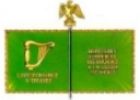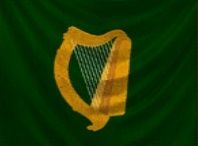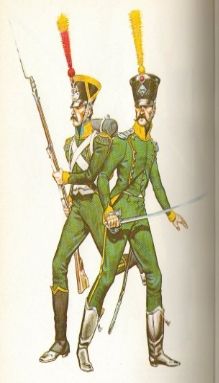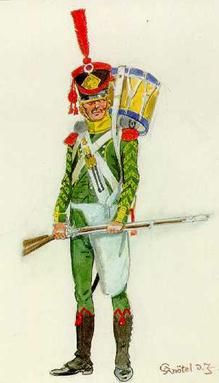DeadEye827
Recruit

Teamspeak
ts59.gameservers.com:9185
ts59.gameservers.com:9185
“The Irish Legion was formed from the almost endless stream of
enthusiastic Irishmen that appeared whenever there was an Englishman to be shot” - Napoleon Bonarparte
Muster Roll Updated Weekly on FridayRegimental Staff Captain (Regimental leader) Captain Deadeye Lieutenant (Regimental second-in-command) N/A Sous Lieutenant (Regimental third-in-command) N/A Non-Commissioned Officers Adjudant Chef (Regimental Colour Bearer) Men of the Ligne Enlisted men Sous Corporal Pinoy SoP Frost SoP Blue SoP Bacon SoP Dr_D Conscripts 2nd Battlion Voltigeurs Enlisted men Reserves (Mercs) Reserve NickCole Medals 1. Teamplay is A+ 
















Thank you to Moskito's for letting me use his medals...
|
[td]




[/td]
[td]
History
Established on 31 August 1803, the Legion Irlandaise was originally created in anticipation of an invasion of ireland. The purpose
was to establish a core of trained irish officers and ncos who could raise the population of ireland in a war of liberation against the english rulers of
ireland. By using Irish soldiers, Napoleon hoped to achieve three important goals: (1) the invasion force would be viewed by the irish population as an army of
liberation, rather than a foreign invader; (2) a minimum number of french troops would be required for the effort; and, (3) such an invasion, if properly
carried out, would tie up a maximum number of English troops for years to come, and could result in the English suing for peace.
However, with the continuing superiority of the British fleet, an invasion of England became more unlikely. The dream of an Irish invasion died with the
British victory over the combined French and Spanish Fleets off Cape Trafalgar in 1805. With Austria and Russia preparing to renew the struggle for control of
central Europe, Napoleon's attention turned to the east.
As the need for manpower for the Empire increased, the decision was made to expand the Irish Legion from a battalion sized unit into a regiment. Men were
recruited first from Irish and Scottish Jacobite expatriates, whose families had been forced to flee following failed revolts. Prisoner of war camps were also
a good source of soldiers. Recruiters for the Legion found that Irish Sailors who had been taken by press gangs, and forced into the British Navy before their
capture, had no loyalty to King George. Once these men were taught the basic soldier skills, they proved good soldiers and hard fighters. Other men for the
Legion came from German and Polish recruits -- forming a truly European force. While commands were given in French, the troops and officers spoke to each other
in English or in their native tongues.
The Irish wore a standard pattern light infantry uniform. Their coatees were a distinctive green with yellow collar, lapels, cuffs, turnbacks, and piping, and
were worn with white pantaloons and waistcoats. Carabiniers had red shako cords and plume, red epaulettes, and red grenade on turnbacks. Voltiguers had green
shako cords, green tipped yellow plumes, green epaulettes with yellow crescent, and green horn on turnbacks. Chasseurs had white shako cords, green plume,
green piped yellow shoulder straps, green horn on turnbacks. Buttons were gold for officers and brass for other ranks. The remaining items of uniform and
equipment were standard light infantry issue. The Regiment received its own flag and an eagle. The flag bore on one side a large gold harp, with the motto:
"L'INDEPENDENCE D'IRLANDE". On the other side was the inscription: "NAPOLEON EMPEREUR DES FRANCAIS A LA LEGION IRLANDAIS".
In the fall of 1807, the Irish were ordered out for duty. The first battalion of the Irish Regiment was ordered to Walcheren Island, in the mouth of the
Scheldt River, to bolster the forces defending the naval base at Antwerp. Just as the British troops that came after them, the soldiers stationed at Walcheren
suffered the drastic effects of "Walcheren fever," a form of malaria.
In the spring of 1809, the Irish Regiment had a new official name -- the 3d Regiment Etranger (Irlandaise). However, most official correspondence continued to
refer to them as the Regiment Irlandaise. On July 30th of that year, the First Battalion received its baptism of fire in battle when English forces landed on
Walcheren Island. After a spirited defense, the vastly outnumbered French forces, including the Regiment Irlandaise, retreated into Flushing. On August 1, The
English attacked all along the perimeter outside Flushing. The Irish suffered heavy casualties, but performed well and held their assigned position. The Irish
regiment remained in an advanced position from the 3d to the 13th of August, and were engaged in almost daily skirmishes. The English were preparing positions
and bringing up siege guns. The expected bombardment began at noon on 13 August. At 5 pm the enemy infantry attacked all of the advanced posts. Although
elements of the other regiments sought to retreat into the city, the Irish held firm and occupied their original position at the end of the day. In the
fighting, the acting Commander of the 1st Battalion, Captain William Lawless, was struck below the right eye by a musket ball that lodged below his ear. This
serious wound forced him to seek medical attention, and he was carried into the town.
By the evening of the 14th of August, after a terrible bombardment which dismounted many of the town's guns and nearly exploded the powder magazine, it was
apparent that further resistance was futile. A truce was called to discuss terms for surrender. On the 15th, the French General surrendered, and the entire
garrison of Flushing were made prisoner and were transported to England where the men remained until the end of the war.
However, a small number of men managed to escape. Among them were Captain Lawless and Lt. Terrence O'Reilly, both officers of the Irish Regiment. Following the
surrender, Lawless made his way to the home of Dr. Mokey. The doctor, who was a friend of Lawless, cared for his wound and hid him when the English occupied
the city. Despite the seriousness of Lawless's wound, he and O'Reilly, who joined him after the surrender, decided to attempt an escape from Flushing by boat.
Lawless carried with him the eagle of the Regiment Irlandaise, which he had guardeddearly since the surrender of Flushing, determined that it would not fall
into the hands of the English. Their plan was to cross the West Scheldt to French held territory. However, the vigilance of the English blockade forced them to
turn back before they were halfway across, and they again went into hiding. First at Dr. Mokey's, then in a farmhouse outside Flushing, and finally back in the
city, the two Irish Officers evaded the enemy for more than 6 weeks. Finally, they were able to hire an open boat that was used for transporting vegetables and
other foodstuffs and make good their escape.
After a hearty welcome from Marshall Bessieres at Antwerp, Lawless was sent on to Paris where he was received by the Emperor himself. Not only was he the
highest ranking officer to escape from Flushing, but he had saved the regiment's eagle, an act which greatly pleased Napoleon. For this feat, Lawless was given
the Legion of Honor, promoted to Chef de Battalion and given command of the first battalion of the Irish Regiment which was being reformed at Landau.
Lieutenant O'Reilly, likewise, received the Legion of Honor and was promoted to Captain.
The second battalion proved no less valiant than the first. The first 800 men of the second battalion joined Marshall Murat's Army in Spain in the fall of
1807. In the Spring of 1808, Murat marched into Madrid, starting a war which was to last until 1813, and was later called "The Peninsular War." The Irish
Regiment was camped outside of Madrid on May 2, 1808 when the inhabitants of that city rose up against the French. The Irish were among the French troops used
to suppress the revolt. Subsequently, the Irish Regiment garrisoned Burgos, and were engaged in constructing a fort for the protection of the town, performing
escort duties, patrols, and skirmishing with Spanish Guerrillas.
In March of 1810, the Second Battalion was assigned to Junot's 8th Corps of the Army of Portugal. The Second Battalion's first action was the seige of Astorga,
a base for supplies and operations of the Spanish forces in the Northwest. The capture of Astorga would secure the right flank and rear of the Army of
Portugal. Captain John Allen's company of voltiguers formed a part of the assault battalion. At 5 pm, on April 21st, Captain Allen led the irish over the tops
of the trenches, across open ground under heavy fire, and into the breach. The Irish voltiguers occupied a house just behind the rampart, and held their
position throughout the night. The remaining Irish troops were also heavily engaged. In the morning, the Spanish surrendered. The Irish brought great honor
upon themselves, but also suffered heavy casualties. The battalion's adjutant major and surgeon were wounded. Every company had lost men killed and wounded
while carrying ladders to the breach. Captain Allen's drummer, although he lost both of his legs, continued to beat the charge. For this, he received the
Legion of Honor. Captain Allen, who led the troops into the breach, and Lieutenant Perry, who was wounded while carrying a ladder to the Breach, were both
rewarded with the Legion of Honor. Elements of the Irish Regiment were ordered to escort the Spanish prisoners to Valladolid. The Irish Regiment also served
with honor in the seige of Almeida, the invasion of Portugal, including the Battle of Bussaco (September 27, 1810), and Fuentes de Onor (1811). Ordered back to
France, on December 25, 1811, the 120 officers and sergeants, corporals and drummers stood inspection for the last time in Spain, bidding a farewell to the
privates, who were incorporated into another regiment. After four years in Spain and Portugal, the Second Battalion of the Irish Regiment arrived at the new
Regimental Depot at Bois-le-Duc in southern Holland on April 11, 1812.
The Irish Regiment remained in southern Holland until February of 1813, fortunately missing the abortive campaign in Russia. As a battle-ready Regiment, the
Irish were ordered east to fight the Russians. They joined Prince Eugene De Beauharnais forces on the west bank of the Elbe-Saale line, where they were
outnumbered by the Russian and Prussian armies by 2:1. On arrival, the Irish were immediately posted north to Stendal to guard against a crossing of the Elbe
by the Russians. On March 20, now-Colonel William Lawless, commanding the Irish Regiment, drove an enemy raiding party back across the elbe at Werben. On the
24th, the Regiment played an important role in capturing Seehousen. The Regiment was on detached duty, and did not participate in the Battle of Lutzen, but
received orders and rejoined on the morning of 21 May at the Battle of Bautzen. At dawn on the 26th, the Irish Regiment was led by Napoleon against the enemy,
whom they drove several miles to the east. This was the first time the Irish had been directly under the orders, and the eyes, of Napoleon. As a reward, the
Irish Regiment was given the honor of posting guard in the town of Lignitz for Napoleon until the Imperial Guard arrived and relieved them. Shortly thereafter,
a temporary armistice was agreed to.
Hostilities resumed in August. The first serious fighting took place in Silesia. The Irish Regiment formed a part of General Vachereau's Brigade, which had
neither artillery nor cavalry support. The enemy cavalry fell attacked Vahchereau's brigade, attempting to break the squares. When they were repulsed, the
enemy artillery fired grapeshot and cannonballs into the square of the Irish Regiment. The Irish closed ranks each time, so that the enemy cavalry were never
able to exploit the effect of the casualties. Finally, the Irish were ordered to retire to a wooded area. The survivors moved back in good order, stopping
every few minutes to fire a volley into the enemy cavalry. During this withdrawal, Lieutenant August St. Leger saved the life of General Vachereau. The
General's Horse had been killed under him while he was giving orders from the center of the Irish Square, and he had to fall back on foot. Enemy cavalry
attacked just as they reached a farmyard that was surrounded by a stone wall. St. Leger threw Vachereau over the wall into the farmyard, and quickly followed.
As a result, both escaped injury. However, another officer was wounded by a sabre stroke before he could reach the safety of the farmyard. This was the
bloodiest day suffered by the Regiment: over 300 of its men were killed or wounded. Two officers were killed, and ten officers wounded.
On August 21, the Irish Regiment led Lauriston's 5th Corps into battle. Although the Regiment did not suffer heavy casualties on this occasion, Colonel Lawless
was struck on the leg by a cannonball while leading the Regiment. He was carried on a door by 6 grenadiers back to the village that was serving as Napoleon's
field headquarters, and the Emperor ordered his personal surgeon, Baron Dominique-jean Larrey to attend to his wound. The limb was too badly damaged to save,
and was amputated. Lawless returned to France to recuperate. On the 24th of August, General Puthod was so pleased with the performance of the Officers and Men
of the Irish Regiment, that he recommended eleven of its members for the Legion of Honor, and other Officers for promotion. All of these recommendations were
supported by General Lauriston.
On the 27th of August, Puthod's division lost contact with the rest of the army during a retreat. By the afternoon of August 29th, the Division was surrounded
by an enemy army of overwhelming superiority, with the Bober River at its back. When its ammunition was expended, the enemy attacked and overran Puthod's
position. Three officers of the Irish Regiment were captured; the remainder swam across the Bober to the opposite shore. One of those officers, Colonel Ware,
the acting commander, saved the Regimental Eagle when he swam across the Bober. The Irish Regiment no longer existed as a fighting unit. Out of the 2,000 men
who had joined the grand army eight months earlier, only 117 were left. The survivors were ordered back to their depot at Bois-Le-Duc.
Back at the depot, the Regiment again began recruiting among the prisoners of war to fill their ranks. In 1814, the under strength regiment garrisoned antwerp
until the seige was ended with the abdication of Napoleon.
The Regiment was then ordered to Lille, the new regimental depot, and then on to avesnes to take up garrison duties. The Irish Regiment was reorganized by the
Bourbon government in 1814. As a part of the reorganization, the Regiment lost its distinctive green uniform, which was replaced with an unpopular sky blue
uniform.
During the Hundred Days, the Officers of the Irish Regiment were informed by their Colonel that Louis XVIII was on his way to the Belgian Coast, and wanted to
know what their feelings were. Major Ware answered for the regiment when he said: "Colonel, give your orders and they will be executed. If the King wants an
escort to the frontiers, he may rely on the regiment doing its duty. But we Irish patriots will never go to the enemy's camp, to fight against France, our
adopted country." [Gallaher, p. 206].
On the 26th of March, the Regiment swore allegiance to Napoleon. The Regiment was, once again, allowed to add the name "Irish" to its title, but its request to
resume its Green Uniform was not deemed important enough to act upon at the time.The Irish Regiment did not participate in the Waterloo campaign.
Upon the return of Louis XVIII, the Regiment once again swore allegiance to the Bourbons. The
royalists returned to Paris in a vengeful mood, however, and the Regiment was officially disbanded on 28 September 1815 at Montreuil-sur-mer. The officers were
discharged yet many desperately wished to remain on active duty. The NCOs and other ranks who did not request a discharge, were sent to Toulon were a royal
foreign regiment was being formed. Finally all regimental equipment was ordered destroyed. As a result the flags of the 2nd and 3rd battalions were burned and
the regimental eagle destroyed. After 8 years of active service the Irish legion was at an end yet they had played their part in the great events of that time,
serving with highly regarded honour and bravery till the very end.
[/td]
[td]




[/td]
[td]
Battle Honours:
Historical:
Defence of Walcheren Island
Peninsular War - Burgo's
Seige of Astorga
Seige of Almeida
Invasion of Portugal
Battle of Bussaco
Battle Fuentes de Onor
Invasion of Seehousen
Battle of Bautzen
Battle of Silesia
Fictional:
1v1 Results
Date | IrishLegion vs Reg | Points (Rounds)
Wins:
Losses:
Schedule
Sunday: Public Linebattle & Promotions
Monday: 1v1 or Public Linebattle
Tuesday: No Event
Wednesday: 1v1 Linebattle
Thursday: No Event
Friday: 1v1 or Public Linebattle
Saturday: Illuminati's Public Lineabattle

Code of Honor
This regiment is souly to have fun.
but here are our 6 main rules
but here are our 6 main rules
- Maximum Respect
- Maturity, at times...
- Activity
- No Trolling
- it's a game, dont rage
- Have Fun
1.) Be on time to Line-battles
2.) Show your full respect to others
3.) Preform with skill and excellence
4.) Don't beg for promotions. In fact it makes me MORE likely not to promote you
5.) we always are looking for leadership qualities in a person, so always preform as your best
2.) Show your full respect to others
3.) Preform with skill and excellence
4.) Don't beg for promotions. In fact it makes me MORE likely not to promote you
5.) we always are looking for leadership qualities in a person, so always preform as your best
In-Game Tag's
[IrishLegion]Rank_Name
Banner
[/td]
Rank Structure
Interested in Joining?
Add me on steam! and we'll talk from there.


Code:
Application to Join
Age:
Past Regiment Experience (If Any)
what days could you make events?
Steam Name:Media
| [size=13pt]Check out our Battle Cry of Freedom Regiment! *Click for Forum Thread* 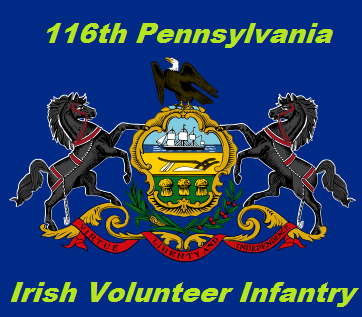 |
[td]

[td][size=13pt]Check out our YouTube Video's
*Click for link*
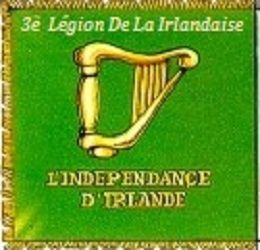 [/td]
[/td][td]
 [/td]
[/td][td]Screenshots[/td]
[td]

[td]Signature's
tba
TBA
DISCLAIMER! Thank you to Joseph Graham for letting us use his thread Template









